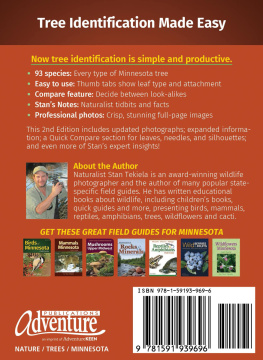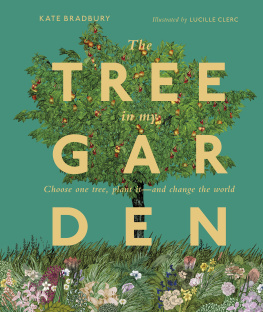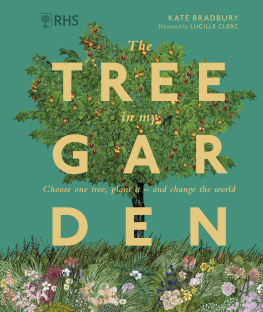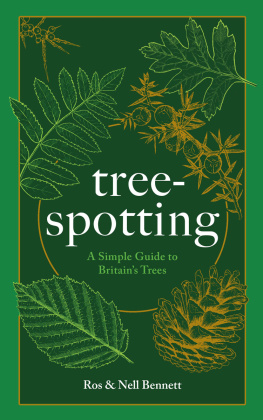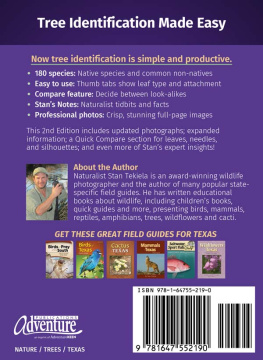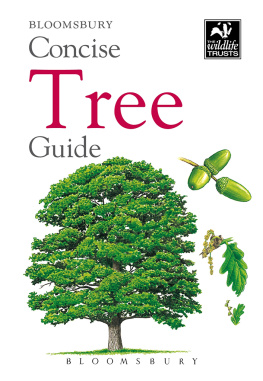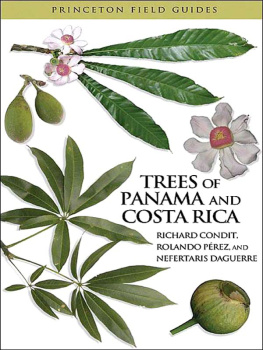The book is dedicated to the memory of Bramley Frith.
CONTENTS
Trees and shrubs are such a feature of the British scene that many people take them for granted. However, imagine what the landscape (not to mention the parks and gardens) of Great Britain and Ireland would be like without them and you can begin to appreciate their significance. Indeed, in many ways it is our trees and shrubs, more than other living things, that help define what we think of as the British countryside.
Native tree species have an ecological significance that goes beyond their individual presence. The role they play in the ecology of our native woodlands particularly fascinates me, perhaps more than their appearance. So I make no apologies for this book being biased in favour of native species. However, introduced trees and shrubs also have a role to play in todays world. Some are widely naturalised, many soften our otherwise often brutal urban landscapes and still more are familiar and valued features of mature gardens. Consequently, I have included a wide range of familiar planted species, along with a selection of more unusual or exotic trees and shrubs mostly associated with collections and arboreta.

Whether planted or growing in the wild, the Common Beech produces autumn colours that cannot fail to lift the spirits.

Known best for its colourful berries, the Rowan is widely planted in urban settings and is a welcome sight in autumn.
My personal interest in trees and shrubs extends beyond enjoyment of trees for their own sake and their role in our ecology. I am also fascinated by the uses of timber and tree products in woodland crafts and traditional practices. Sections of the book reflect this interest.
THE REGION COVERED BY THIS BOOK
The region covered by the book comprises the whole of mainland England, Wales, Scotland and Ireland, as well as offshore islands including the Shetlands, the Orkneys, the Hebrides, the Isle of Man, the Isles of Scilly and the Channel Islands.
THE CHOICE OF SPECIES
The coverage of the book is restricted mainly to what most people understand to be trees and larger shrubs; the former are usually defined as single-boled plants with a trunk that exceeds 5m, while shrubs are typically multi-stemmed. However, for the sake of completeness, and as a minor self-indulgence, I have also included native members of tree groups such as willows and birches that should not qualify for inclusion, in the strict sense, on the grounds that they are too small.
Complete British Trees will enable amateur naturalists to identify all native and widely naturalised tree and shrub species found growing wild in the British countryside. With an eye to the exotic, it also allows naturalists and gardeners alike to identify ornamentally planted trees, and to anticipate what any given specimen tree will look like if bought and planted. I hope that the range of popular garden species included in the book helps in this regard.
The book has been designed so that the text and photographs for each species are on facing pages. A system of labelling clearly identifies each tree or shrub. The text complements the information conveyed by the photographs. By and large, the order in which species appear in the main section of the book roughly follows standard botanical classification. However, because parts of the field are in a state of flux, the order may differ slightly from that found in other guides, past, present or future.
SPECIES DESCRIPTIONS
At the start of each species description the most commonly used and current English name is given. My primary source of reference for this, and for scientific names, has been Clive Staces . Essentially this covers native and widely naturalised British species. For non-native garden trees and shrubs I have followed the naming employed by Owen Johnson in Collins Tree Guide.
The English name of each plant is followed by its scientific name, which comprises the genus name followed by the specific name. In a few instances, where this is pertinent, reference is made (either in the species heading or in the main body of the text) to a further subdivision: subspecies. Some cultivated trees and shrubs are known best, or sometimes exclusively, by their cultivar name, so where this helps with recognition I have included it; some hybrid trees and shrubs are now known only by their horticultural names.
The text has been written in as concise a manner as possible. Each description begins with a summary of the tree or shrub. To avoid potential ambiguities, the following subheadings break up the rest of each species description: BARK; BRANCHES (occasionally SHOOTS); LEAVES; REPRODUCTIVE PARTS; STATUS AND DISTRIBUTION; COMMENTS. Not all these headings are used for every species. Within the sections dealing with plant parts, colour, shape and size are described; these tend to be more constant, and hence are more useful for identification, than the overall size of the tree or shrub.
MAPS
The maps provide invaluable information about the distribution and occurrence of species in the region, but obviously they are only relevant in the case of native species and widely naturalised ones. Magenta has been used to represent the range of native species while cyan denotes the occurrence of naturalised alien trees or shrubs; the intensity of the colour gives an indication of a species abundance in a given area. In compiling the maps, I have made reference to a number of sources, including An Atlas of the Wild Flowers of Britain and Northern Europe, various county floras, the and my own notes. The maps represent the current ranges of trees and shrubs in the region in general terms. Please bear in mind that, given the size of the maps, small and isolated populations will not necessarily be featured. Furthermore, the ranges of many species (particularly invasive introduced species and declining native trees and shrubs) are likely to change as the years go by.

Map coloration helps distinguish between the native and introduced distributions of species such as the Scots Pine.
PHOTOGRAPHS
Great care has gone into the selection of photographs for this book and in many cases the images have been taken specifically for this project. Preference was given to photographs that serve both to illustrate key identification features of a species and to emphasise its beauty. In many instances, smaller inset photographs illustrate features useful for identification that are not shown clearly by the main image.
Achene one-seeded dry fruit that does not split.
Acute sharply pointed.
Alien introduced by man from another part of the world.
Alternate not opposite.
Anther pollen-bearing tip of the stamen.
Auricle one of a pair of lobes at the base of a leaf.
Axil angle between the upper surface of a leaf, or its stalk, and the stem on which it is carried.


